#The Hindu News Analysis
Explore tagged Tumblr posts
Text
4 December 2024 : The Hindu Editorial Analysis
Prepare smarter with The Hindu news analysis for IAS aspirants, your go-to resource for mastering current affairs. This comprehensive analysis breaks down key news articles, editorials, and opinions, aligning them with the UPSC syllabus. Gain clarity on crucial topics like governance, environment, and international relations, and understand their implications for Prelims and Mains. Tailored for IAS preparation, this resource bridges the gap between daily news and exam-relevant insights. Stay ahead in your journey with structured updates and in-depth explanations that empower you to tackle complex questions with confidence.
#The Hindu news analysis for IAS#UPSC mains editorial preparation#Daily editorial review for UPSC#UPSC prelims and mains current affairs
0 notes
Text
Hindu New Year Shri Krodhi predictions for zodiac signs
Discover what the Hindu new year, Shri Krodhi Naam Samvatsar brings for each zodiac sign. Read unique insights for each zodiac sign based on planetary positions in the year 2024-25. Also learn simple tips to improve the outlook for your sign.
I have written the general predictions for Shri Krodhi naam samvatsar, the Hindu New year in this post. And posted the video on Youtube here. Now let’s see how the new Vedic year from 9th Apr 2024 to 29th Mar 2025 is going to be for the individual Birth Moon signs. These are general results which will be modified by your personal horoscope positions. Individual specific results depend on the…

View On WordPress
#2024 astrology#hindu new year#hinduism#horoscope analysis#jyotish#new year predictions#new year zodiac signs#sanatan dharma#shri krodhi vedic year#tejaswini#vedic astrology#vedic new year#zodiac predictions
0 notes
Text


'Vishnu & Lakshmi' Talon Abraxas
The Symbolic Meaning of Lord Vishnu and Lakshmi
Lord Vishnu is Hindu Myth
Hindu’s recognise Vishnu as the “protector.” He is the aspect of your personality that can dissolve the ego and uphold new Dharmas that enable you to develop peace of mind and bliss.
Ayurvedic teachings describe consciousness as being present. By taking control of emotions present in the five elements and the three gunas, you can take control of your life and master the energies of universal manifestation.
Vishnu is the higher consciousness that guides us and downloads messages that inform us what the right actions are to take. The problem most of us suffer is not knowing when we receive these messages because we are rooted in base consciousness.
Conscious comes to us as a thought, symbolised by Brahma in Hindu mythology. In the “Padma Purana”, Vishnu gives birth to Brahma who blossoms from the lotus flower that sprouts from Vishnu’s navel.
Brahma is said to be the creator of all things. He is the manifestation of ideas in the physical plane. The Lotus flower symbolises enlightenment, implying that consciousness passed to mortals is the Absolute Truth. The instructions to follow.
The Rig Veda states: “Vishnu is the most ancient of all, yet also the most recent. Nothing and no one creates Vishnu, yet Vishnu creates everyone and everything.”
In essence, the Supreme deity is a creative source but serves a greater purpose as the preserver. Escaping the bonds of the habitual mind is not easy and Vishnu has to keep a check that right actions are being followed.
It is said that Vishnu created the world with the right side of his body – that which is controlled by the left-side hemisphere of the brain. Although there are creative aspects in the right-side of the brain, it is widely accepted that most creative powers arise from the left side of the brain.
The right side of the brain is associated with collecting information and analysis. It’s the sensible part of the brain that talks us through what we should really do.
The Incarnations of Vishnu
All matter is conscious which evolves. As Absolute conscious, Vishnu creates the world through Brahma, and Hindu mythology gives an account of the evolution of Earth in the incarnations of Vishnu.
According to legend, Vishnu has reincarnated nine times so far. They are:
Matsya, the fish Kurma, the Turtle (reptiles) Vahara, the pig (animal life) Narasimha, half man, half lion Vaman, the man-dwarf Parashuram the man with an axe Rama – moral man Krishna – philosophical man Buddha – enlightened man
As consciousness evolves in nature it consistently creates improved versions of itself. But Vishnu can only do this with the help of his wife Lakshmi, the goddess of wealth and prosperity.
The Symbolic Meaning of Lakshmi
Lakshmi emerged from the churning of the milky ocean on a lotus flower and subsequently incarnates amongst mankind in various forms. Described as ‘the mother of the world’ the goddess nurtures consciousness.
Lakshmi cleans Vishnu’s feet to show her nurturing nature. In chapter 8 of the Vishnu Purana says:
“Vishnu is meaning, she is speech; Hari is polity, she is prudence; Vishnu is understanding, she is intellect, he is righteousness, she is devotion.”
Lakshmi means ‘goals’ and as the goddess of wealth, beauty and love is said to reside in those that are prospering in life. In Hindu art she is always depicted sitting on a one hundred petal lotus indicated she is pure.
Together with Vishnu, Lakshmi is Absolute Consciousness, or The Truth.
Her four arms represent Dharma (doing the right thing), prosperity, perfection and freedom from mental and emotional bondages.
Other qualities of Lakshmi are portrayed through the elephants she is often pictured with. In Hindu esoteric symbolism, elephants represent strength, wisdom and patience, qualities needed to nurture.
The symbolic meaning of Hindu symbols
In ancient myth and Hindu art, Vishnu carries symbolic objects in his four hands and lies on a bed of floating serpents. The serpents represent the wisdom and peace of a calm mind that is freed from anxious thought.
Vishnu’s other symbols are:
Conch = vibrational frequencies and energetic forces that create and sustain all life in the universe. Scientifically speaking, Vishnu is the personification of the Conscious Universe.
Mace = the destructive nature of the god. It symbolizes the dissolution of ego and negative traits or even the destruction of the universe itself.
Bow or Lotus Flower = Both the lotus and the bow represent awakened consciousness that allows you to see beyond the veil of illusion.
Discus = The spinning discus symbolises Purity of mind and used by Vishnu to destroy demons.
The symbolic meaning of Vishnu and Lakshmi relates to the highest forms of human consciousness that we are aware of. Together they tell us what to do, and give us the ability to nurture Brahma into fruition.
Master Mind Content offers online symbolism courses. We have several in-depth guides that explain how symbolism relates to the body-mind-energy connection. Understanding symbolism can help you make important decisions, improve your quality of life and understand more about the world.
34 notes
·
View notes
Text


















THE RINGS OF POWER – analysis of Sauron’s character 1/3
Throughout the series of The Rings of Power, there is heavy symbolism and allegory. Several of these that tie in with Sauron's character seem to have been noticed by some but gone largely undiscussed. Frequent contrasts between the colors blue and red have been used in the storyline arc of his character. The two elements that are represented by these colors are water and fire, which are weaponized by Sauron in Tolkien's legendarium – the deluge of Númenor, and his kingdom of Mordor that is best known for its fiery Mount Doom. Another allegory that seems to be at play here, and plausibly deliberately done by the show creators, are the subtle hints of Sauron embodying many of the main traits of the ancient three-eyed god, Rudra, of the archaic oral tradition of the Rig Veda that was brought to the Indian subcontinent in a bygone epoch by the Vedic civilization who were Proto-Indo-Europeans from somewhere in the far north. Around the time when the Vedic civilization mysteriously disappeared from India sometime in the second millennium BC, the oral tradition of the Vedas was transferred into written documentation. Then when the Vedic civilization spirited away from India, the Hindu civilization was born and with it, the seedling of a newly developing religion would come to grow into the tree known as Hinduism today.
From this seed, grew multilayered stories featuring many new gods. But some were built from the characteristics of the preexisting Vedic gods. One such god is the familiar Shiva, depicted as three-eyed, blue-skinned, wielding a trishula, a lunar ornament atop his hair, and his serpent Vasuki coiled around his neck. This god was developed out of Rudra, likely based on a word used in an account in the Rig honoring Rudra as 'auspicious,' a word that in Sanskrit is śivaḥ. Throughout the Vedic period, Rudra was often associated with the color red, depicted as an irascible god with whom not even the other gods wanted anything to do with unless they needed his destructive powers to solve a problem. Then later when Hinduism developed, the color blue was attributed to Shiva, who is seen as a calmer side of Rudra, and is believed to be able to control water, especially at night when the Moon's gravity pulls the Earth towards it. This trait of his seems to have been incorporated into The Rings of Power, especially concerning the otherworldly aura of Sauron’s sword hilt that emblazons the symbol of Mordor, seemingly reminiscent of Shiva’s three-pronged trishula. In fact, when his reformed sword is used as a key by Waldreg to awaken the ancient fire of Mount Doom, the element of water is used to achieve this via a massive flowing river that pours into the magma chamber of the volcano, triggering a phreatomagmatic eruption. In this way, Sauron’s weapon is linked to the elements of water and fire. Archaic knowledge of the interaction between water and magma chambers has been demonstrated in the Rig.
(Click here to continue to segment 2)
#Here it is#Sauron Analysis#TROP#The Rings of Power#Rings of Power#Charlie Vickers#Halbrand#Annatar#LOTR#Lord of the Rings#The Lord of the Rings#Rudra#Shiva#Rudra-Shiva#Rig Veda#Vedicism#Hindu#Hinduism#Vedic civilization#mine#my edit#Sauron#Eye of Mordor#The Eye of Mordor#Eye of Sauron#The Eye of Sauron
17 notes
·
View notes
Text
Hindutva's Foreign Tie-up in the 1930s
Archival Evidence
To understand militant Hinduism, one must examine its domestic roots as well as foreign influence. In the 1930s Hindu nationalism borrowed from European fascism to transform 'different' people into 'enemies'. Leaders of militant Hinduism repeatedly expressed their admiration for authoritarian leaders such as Mussolini and Hitler and for the fascist model of society. This influence continues to the present day. This paper presents archival evidence on the would-be collaborators.
By Marzia Casolari
Source: Economic and Political Weekly, Jan. 22-28, 2000, Vol. 35, No. 4 (Jan. 22-28, 2000), pp. 218-228
'Fascist' was in Sumit Sarkar's words, "till the other day a mere epithet" ('The Fascism of the Sangh Parivar', Economic and Political Weekly, January 30, 1993, p 163). It has come to define the ideology and practice of the Hindu militant organisations. It is a common place, accepted by their opponents, as well as by those who have a critical, but not necessarily negative, view of Hindu fundamentalism. Defining the Rashtriya Swayamsewak Sangh (RSS) and, in general, the organisations of militant Hinduism I as undemocratic, with authoritarian, paramilitary, radical, violent tendencies and a sympathy for fascist ideology and practice, has been a major concern for many politically oriented scholars and writers. This has been the case with the literature which started with Gandhi's assassination and continues up to the present day with works such as Amartya Sen's India at Risk (The New York Review of Books, April 1993) and Christophe Jaffrelot's The Hindu Nationalist Movement in India (Viking, New Delhi, 1996), the latest book published on the subject, or the well known Khaki Shorts and Saffron Flags (Orient Longman, New Delhi, 1993), which came out soon after the destruction of the Babri masjid. As a result, the fascist ideological background of Hindu fundamentalism is taken for granted, never proved by systematic analysis. This is an outcome that is, to a certain extent, explained by the fact that most of the above-mentioned authors are political scientists and not historians.
It is a fact that many of those who witnessed the growth of Hindu radical forces in the years around the second world war were already convinced of the Sangh's fascist outlook. Particularly acute was the perception that the Congress had of these organisations and their character. There is no need to mention the already well known opinion of Nehru, who, right from the beginning, had pointed at these organisations as communalist and fascist.
Less well known is the fact that, as shown by a confidential report circulated within the Congress most probably at the time of the first ban of the RSS, after Gandhi's assassination, the similarity between the character of the RSS and that of fascist organisations was already taken for granted. In fact, the report itself states that the RSS
...Started in Nagpur some sort of Hindu Boys Scout movement. Gradually it developed into a communal militarist organisation with violent tendencies.
The RSS has been purely Maharashtrian brahmin organisation. The non-brahmin Maharashtrians who constitute the bulk of C P and Maharashtra have no sympathy with it.
Even in the other provinces the chief organisers and whole-time workers will be found to be inevitably Maharashtrian brahmins.
Through the RSS the Maharashtrian brahmins have been dreaming of establishing in India 'a Peshwa Raj' after the withdrawal of Britishers. The RSS flag is the Bhagwa Flag of the Peshwas - Maharashtrian rulers [who] were the last to be conquered by the British - and after the termination of British rule in India, the Maharashtrians should be vested with political powers.
The RSS practises secret and violent methods which promote 'fascism'. No regard is paid to truthful means and constitutional methods.
There is no constitution of the organisation; its aims and objects have never been clearly defined. The general public is usually told that its aim is only physical training, but the real aims are not conveyed even to the rank and file of the RSS members. Only its 'inner circle' is taken into a confidence.
There are no records or proceedings of the RSS organisation, no membership registers are maintained. There are also no records of its income and the expenditure. The RSS is thus strictly secret as regards its organisation. It has consequently... (National Archives of India (NAI), Sardar Patel Correspondence, microfilm, reel no 3, 'A Note on the RSS', undated). Unfortunately the document stops abruptly here, but it contains enough evidence of the reputation the RSS already had by the late 1940s.
This document, however, is by no means exceptional. An accurate search of the primary sources produced by the organisations of Hindu nationalism, as well as by their opponents and by the police, is bound to show the extent and the importance of the connections between such organisations and Italian fascism. In fact the most important organisations of Hindu nationalism not only adopted fascist ideas in a conscious and deliberate way, but this happened also because of the existence of direct contacts between the representatives of the main Hindu organisations and fascist Italy.
To demonstrate this, I will reconstruct the context from which arose the interest of Hindu radicalism in Italian fascism right from the early 1920s. This interest was commonly shared in Maharashtra, and must have inspired B S Moonje's trip to Italy in 1931. The next step will be to examine the effects of that trip, namely how B S Moonje tried to transfer fascist models to Hindu society and to organise it militarily, according to fascist patterns. An additional aim of this paper is to show how, about the end of the 1930s, the admiration for the Italian regime was commonly shared by the different streams of Hindu nationalism and the main Hindu leaders.
Particular attention will be devoted to the attitude adopted by the main Hindu organisations during the second world war. During those crucial years, Hindu nationalism seemed to uneasily oscillate between a conciliatory attitude towards the British, and a sympathy for the dictators. This is in fact far from surprising because - as will be shown - in those years, militant Hindu organisations were preparing and arming themselves to fight the so-called internal enemies, rather than the British.
More generally, the aim of this paper is to disprove Christophe Jaffrelot's thesis that there is a sharp distinction between nazi and fascist ideology on one side and RSS on the other as far as the concept of race and the centrality of the leader are concerned.^2
I Hindu Nationalists and Italian Fascism
None of the works mentioned above, Jaffrelot's included, deals with what I consider a most important problem, namely, the existence of direct contacts between the representatives of the fascist regime, including Mussolini and Hindu nationalists. These contacts demonstrate that Hindu nationalism had much more than an abstract interest in the ideology and practice of fascism.
The interest of Indian Hindu nationalists in fascism and Mussolini must not be considered as dictated by an occasional curiosity, confined to a few individuals, rather, it should be considered as the culminating result of the attention that Hindu nationalists, especially in Maharashtra, focused on Italian dictatorship and its leader. To them, fascism appeared to be an example of conservative revolution. This concept was discussed at length by the Marathi press, right from the early phase of the Italian regime.
From 1924 to 1935 Kesari regularly published editorials and articles about Italy, fascism and Mussolini. What impressed the Marathi journalists was the socialist origin of fascism and the fact that the new regime seemed to have transformed Italy from a backward country to a first class power. Indians could not know, then, that, behind the demagogic rhetoric of the regime, there was very little substance.
Moreover, the Indian observers were convinced that fascism had restored order in a country previously upset by political tensions. In a series of editorials, Kesari described the passage from liberal government to dictatorship as a shift from anarchy to an orderly situation, where social struggles had no more reason to exist.^3 The Marathi newspaper gave considerable space to the political reforms carried out by Mussolini, in particular the substitution of the election of the members of parliament with their nomination (ibid, January 17, 1928) and the replacement of parliament itself with the Great Council of Fascism. Mussolini's idea was the opposite of that of democracy and it was expressed by the dictator's principle, according to which 'one man's government is more useful and more binding' for the nation than the democratic institutions (ibid, July 17, 1928).%4 Is all this not reminiscent of the principle of 'obedience to one leader' ('ek chalak anuvartitva') followed by the RSS?
Finally, a long article of August 13, 1929, 'Italy and the Young Generations', stated that the Italian young generation had succeeded the old one to lead the country. That had resulted in the 'fast ascent of Italy in every field'. The article went on to describe at length the organisation of the Italian society according to fascist models. The principal reasons of the discipline of the Italian youths were strong religious feelings, widespread among the population, attachment to the family, and the respect of traditional values: no divorce, no singles, no right to vote for women, whose only duty was to sit at home, by the fireplace. The article focused then on the fascist youth organisations, the Balilla and the Avanguardisti.
One may wonder how the Indian journalists could be so well informed about what was going on in Italy. Very possibly, among their sources there was a pamphlet in English, published by an Italian editor in 1928, entitled The Recent Laws for the Defence of the State (copy in NAI, Foreign and Political Department, 647G, 1927). Emphasised, right from the beginning, was the importance of the National Militia, defined as "the bodyguard of the revolution". The booklet continued with the description of the restrictive measures adopted by the regime: a ban on the "subversive parties", limitations to the press, expulsion of "disaffected persons" from public posts, and, finally, the death sentence.
Significantly, the shift from the liberal phase to fascism is described by the pamphlet in strikingly similar terms to those employed by the above-mentioned articles:
This step [the shift to fascism] has struck a death blow to the thread-bare theories of Italian liberalism, according to which the sovereign state must observe strict neutrality towards all political associations and parties. This theory explains why in Italy the ship of state was drifting before the wind, ready to sink in the vortex of social dissolution or to be wrecked on the rocks of financial disaster.
Another inspiring source of the literature published in Kesari must have been the work by D V Tahmankar, the correspondent of the Marathi newspaper from London and admirer of the Italian dictator. In 1927 Tahmankar published a book entitled Muslini ani Fashismo, (Mussolini and Fascism), a biography of the dictator, with several references to the organisation of the fascist state, to the fascist social system, to the fascist ideology, and to Italy's recent past. An entire chapter, the last, was devoted to description of fascist society and its institutions, especially the youth organisations.
One can easily come to the conclusion that, by the late 1920s, the fascist regime and Mussolini had considerable popularity in Maharashtra. The aspects of fascism which appealed most to Hindu nationalists were, of course, both the militarisation of society and what was seen as the real transformation of society, exemplified by the shift from chaos to order. The anti-democratic system was considered as a positive alternative to democracy which was seen as a typically British value.
Such literature made an implicit comparison between fascism and the Italian Risorgimento. The latter's influence on Indian nationalism, both moderate and radical, is well known.^5 However, whereas the Risorgimento appealed to both moderates and extremists, fascism appealed only to the radicals, who considered it as the continuation of the Risorgimento and a phase of the rational organisation of the state.
The first Hindu nationalist who came in contact with the fascist regime and its dictator was B S Moonje, a politician strictly related to the RSS. In fact, Moonje had been Hedgewar's mentor, the two men were related by an intimate friendship. Moonje's declared intention to strengthen the RSS and to extend it as a nationwide organisation is well known. Between February and March 1931, on his return from the round table conference, Moonje made a tour of Europe, which included a long stop-over in Italy. There he visited some important military schools and educational institutions. The highlight of the visit was the meeting with Mussolini. An interesting account of the trip and the meeting is given in Moonje's diary, and takes 13 pages (Nehru Memorial Museum and Library (NMML), Moonje papers, microfilm, m 1).^6
The Indian leader was in Rome during March 15 to 24, 1931. On March 19, in Rome, he visited, among others, the Military College, the Central Military School of Physical Education, the Fascist Academy of Physical Education, and, most important, the Balilla and Avanguardisti organisations. These two organisations, which he describes in more than two pages of his diary, were the keystone of the fascist system of indoctrination - rather than education - of the youths. Their structure is strikingly similar to that of the RSS. They recruited boys from the age of six, up to 18: the youths had to attend weekly meetings, where they practised physical exercises, received paramilitary training and performed drills and parades.
According to the literature promoted by the RSS and other Hindu fundamentalist organisations and parties, the structure of the RSS was the result of Hedgewar's vision and work. However Moonje played a crucial role in moulding the RSS along Italian (fascist) lines. The deep impression left on Moonje by the vision of the fascist organisation is confirmed by his diary:
The Balilla institutions and the conception of the whole organisation have appealed to me most, though there is still not discipline and organisation of high order. The whole idea is conceived by Mussolini for the military regeneration of Italy. Italians, by nature, appear ease-loving and non-martial like the Indians generally. They have cultivated, like Indians, the work of peace and neglected the cultivation of the art of war. Mussolini saw the essential weakness of his country and conceived the idea of the Balilla organisation...Nothing better could have been conceived for the military organisation of Italy...The idea of fascism vividly brings out the conception of unity amongst people...India and particularly Hindu India need some such institution for the military regeneration of the Hindus: so that the artificial distinction so much emphasised by the British of martial and non-martial classes amongst the Hindus may disappear. Our institution of Rashtriya Swayamsewak Sangh of Nagpur under Dr Hedgewar is of this kind, though quite independently conceived. I will spend the rest of my life in developing and extending this Institution of Dr Hedgewar all throughout the Maharashtra and other provinces.
He continues describing drills and uniforms:
I was charmed to see boys and girls well dressed in their naval and military uniforms undergoing simple exercises of physical training and forms of drill.
Definitely more meaningful is the report of the meeting with Mussolini. On the same day, March 19, 1931 at 3 pm, in Palazzo Venezia, the headquarters of the fascist government, he met the Italian dictator. The meeting is recorded in the diary on March 20, and it is worth reproducing the complete report.
...As soon as I was announced at the door, he got up and walked up to receive me. I shook hands with him saying that I am Dr Moonje. He knew everything about me and appeared to be closely following the events of the Indian struggle for freedom. He seemed to have great respect for Gandhi. He sat down in front of me on another chair in front of his table and was conversing with me for quite half an hour. He asked me about Gandhi and his movement and pointedly asked me a question "If the Round Table Conference will bring about peace between India and England". I said that if the British would honestly desire to give us equal status with other dominions of the Empire, we shall have no objection to remain peacefully and loyally within the Empire; otherwise the struggle will be renewed and continued. Britain will gain and be able to maintain her premier position amongst the European Nation (sic) if India is friendly and peaceful towards her and India cannot be so unless she is given Dominion Status on equal terms with other Dominions. Signor Mussolini appeared impressed by this remark of mine. Then he asked me if I have visited the University. I said I am interested in the military training of boys and have been visiting the Military Schools of England, France and Germany. I have now come to Italy for the same purpose and I am very grateful to say that the Foreign Office and the War Office have made good arrangements for my visiting these schools. I just saw this morning and afternoon the Balilla and the Fascist Organisations and I was much impressed. Italy needs them for her development and prosperity. I do not see anything objectionable though I have been frequently reading in the newspapers not very friendly criticisms about them and about your Excellency also. Signor Mussolini: What is your opinion about them? Dr Moonje: Your Excellency, I am much impressed. Every aspiring and growing Nation needs such organisations. India needs them most for her military regeneration. During the British Domination of the last 150 years Indians have been waved away from the military profession but India now desires to prepare herself for undertaking the responsibility for her own defence and I am working for it. I have already started an organisation of my own, conceived independently with similar objectives. I shall have no hesitation to raise my voice from the public platform both in India and England when occasion may arise in praise of your Balilla and Fascist organisations. I wish them good luck and every success. Signor Mussolini - who appeared very pleased - said - Thanks but yours is an uphill task. However I wish you every success in return. Saying this he got up and I also got up to take his leave.
The description of the Italian journey includes information regarding fascism, its history, the fascist 'revolution', etc, and continues for two more pages. One can wonder at the association between B S Moonje and the RSS, but if we think that Moonje had been Hedgewar' s mentor, the association will be much clearer.^7 The intimate friendship between Moonje and Hedgewar and the former's declared intention to strengthen the RSS and to extend it as a nationwide organisation prove a strict connection between Moonje and the RSS. Moreover, it makes sense to think that the entire circle of militant Hinduism must have been influenced by Moonje's Italian experience.
II Moonje’s Plans for Militarising Hindus
III Eve of Second World War
IV Savarkar and Nazism
V Waiting for the Right Enemy
VI Conclusions
Notes
83 notes
·
View notes
Note
ok so i am very much uninformed on politics, i decided at a younger age that i wasn't interested in it and therefore would not read or keep myself particularly informed about it. obviously this is a bad idea, and i want to change and keep myself informed on actual politics and well, abstract[?] (wrong word but cannot think of another, basically mean like. knowing which political .. stance ?? [idk. like marxist or communist or whatever] i might be.) ones as well. what's a good place to get started here? where do i look for actual politics going on in india since i'm pretty sure ndtv or whatever isn't exactly the best source? or maybe it is? idk, like i said i'm pretty uninformed on the matter but would like to learn more
so one thing is, in india you have to accept the media landscape is just dire because being a journalist with integrity is a bit like signing up to have your life ruined. all major media has been bought by hindutva already. what you have to do is more learn to read between lines, understand people's motivations, which is a matter of practice. a good way to start is to read analysis (not news reports) of the same incident in different media and you'll start noticing patterns. even more important imo is to talk and bounce ideas with a friend at a similar place as you or someone interested in politics who won't overwhelm you with their perspective. you can try online but idt its safe or advisable anymore to do that experiment online. i had debate club in university (sad) and some socialist reading groups (better) after. the thing is this journey to self education is kind of personal and im also not pedagogically oriented or trained? so lots of first person description instead of prescriptions.
i still check what's up on ndtv because it gives me a good pulse of what english language media and liberals are thinking. major newspapers i scan hindu and the indian express sometimes. online i have a look at newslaundry (also has some youtube content) and the wire, they're reader supported and haven't turned full hindutva yet. i read longer form things in the caravan and epw, but these are subscription based. i keep tabs on the latest round of hindutva fake news when alt news debunks it.
for the abstract things, i literally did an online course bc i was frustrated by what all the liberal arts grads seemed to already agree on. i did ian shapiro's moral foundations of politics which is available online as both youtube lectures and a textbook. if you want to go that route feel free but it's not necessary, you can also try to read the entries on wikipedia or stanford encyclopedia of philosophy (more expertise) when you encounter something unfamiliar and build up like that. podcasts like bbc in our time will often interview academics to give intros to many political philosophy concepts and thinkers. whatever your learning style supports! i think the important thing is to find something you are actually interested in, and take that tack. i like history, so i might read books about historical revolutions or historical forms of organising society or listen to podcasts like mike duncan's revolutions.
For communism the usual starting points are these very short pamphlets:
Principles of Communism by Engels
The Manifesto of the Communist Party by Marx
Wage-Labor and Capital by Marx
Socialism: Utopian and Scientific by Engels
feel free to ask for more specific questions!
149 notes
·
View notes
Text

Hey, y’all, it’s Weird Wednesday! Where on some Wednesdays, I blog about weird stuff and give writing prompts.
Today: Roopkund: Skeleton Lake
Welcome on this Weird Wednesday! Today we’re off to the Indian Himalayas to check out a lake that people are just dying to visit. Literally.
Also known as “Skeleton Lake,” Roopkund is famous for having shores littered with the scattered bones of at least 300 people (see pic, above). Who were they? How did they die and when? Unfortunately, nobody knows for sure. But there are some clues.
At first, people wondered if the skeletons might belong to a doomed army marching through the mountains, but the remains include women and children, and few weapons. There aren’t many elderly people whose presence might suggest the lake was used as a graveyard, and their bones show no sign of an epidemic disease that could have wiped out hundreds at once. Instead, the clothing and artifacts found with the bones suggest they belong to pilgrims on a holy voyage, and indeed, Roopkund is near several Hindu pilgrimage sites.
But how did they all die? Oddly enough, some of the bones show signs of blunt trauma. And there is a local legend that tells of a large party of pilgrims who angered the goddess Nanda Devi, who punished them with a hailstorm. Hail is common in the area, so it makes perfect sense: the legend is preserving a real weather event that killed hundreds.
Except recent DNA analysis and other scientific studies suggest something far stranger.
Check out the blog post for the whole story and some writing prompts, such as:
Visitors from another realm. Just when you think you understand what happened in the past, a new find changes everything. It’s especially unsettling when the evidence consists of human remains. You could write just that kind of mystery about our planet or a fantasy world, where scientists discover foreign travelers in a strange place, or evidence of ancient contact between two peoples long before they were thought to have met. Explanations could include voyages of exploration or just people getting lost, or less realistic ideas like teleportation, tunnels through the center of the earth, alien abductions that return people in the wrong place, or magic.
DannyeChase.com ~ AO3 ~ Linktree ~ Weird Wednesday writing prompts blog ~ Resources for Writers
Image credit
#Dannye writes#Weird Wednesday blog#writing prompts#writing inspiration#horror prompt#scifi prompt#fantasy prompt#writing#writers on tumblr#writeblr#writeblogging#writing community#blogging#horror#scifi#fantasy#roopkund#skeleton lake#himalayas#mystery#skeletons
8 notes
·
View notes
Text
Ashlesh analysis
Since im the only person in the face of this world that is deranged enough about Nilah to go beyond the mortal realm seeking for answers, i felt i had the responsibility to write this post with as much info as i could
frequently i feel like people dont know how to address or read ashlesh since 1) he's subortinated to nilah (as if he was an accessory, and not an entirely different entity, but i understand why this overlap happens) and 2) it's not like we have a lot of info on him to begin with
or that's i think people like to believe; i mean, yes he has less lore that directly mentions him than fiddlesticks, but i believe that with a bit of reading we can infer a lot from ashlesh, and that's why im here writing this post

1. DUALITY
first i would like to point out something interesting that (so far) just happened with ashlesh: the fact that he has two different titles
for me, it speaks about ashlesh complexity as a character - he resonates in duality, joy under his influence can mean multiple things, his waters cut deep but they also veil against harm, he gives power but takes the soul
i feel like (at some point) ashlesh was closer to humanity (meaning that he helped humans thrive at the same time he fed on them, yk like cattle) than to his siblings - The Ten Kings - and that's why he was granted two titles, he seems to go beyond the "just consume" that we see from fiddle, yes he fed on humans but he understand how to do this
the devil is smarter
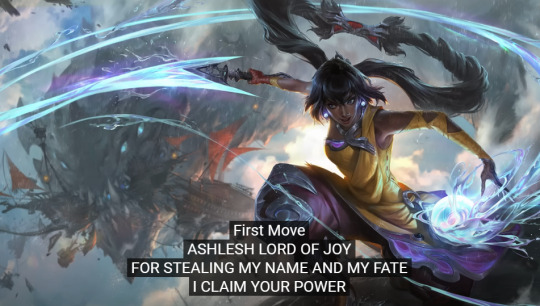

this of course is a past that we'll probably never know about ashlesh; if it was once written, the river of fate has likely washed it away long ago
2. AMBITIONS
despite mysterious, ashlesh seems to have a clear and audacious goal: fight the heavens


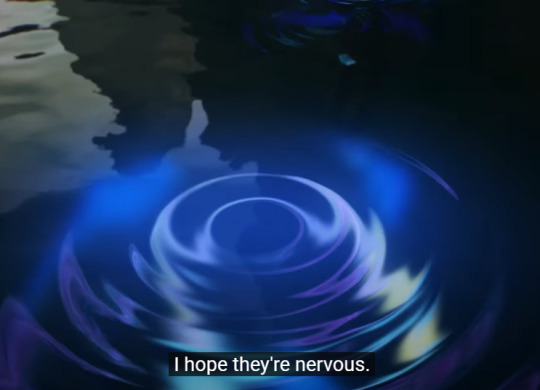
it's transparent like water that ashlesh harbours resentment towards the celestial realm above and it has a good reason: it was the celestials that trapped him
here's the story
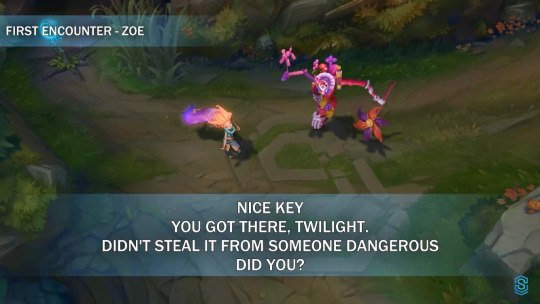
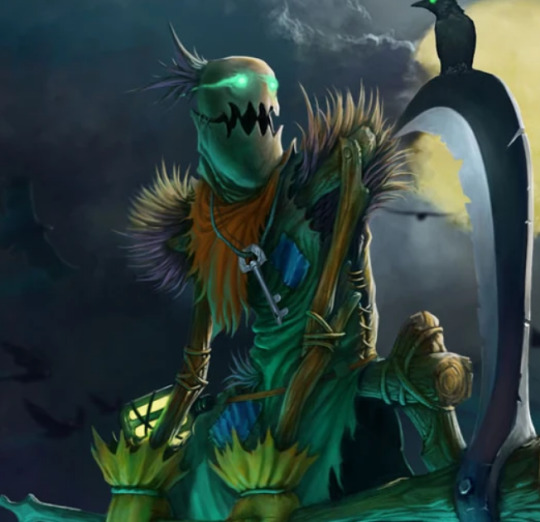
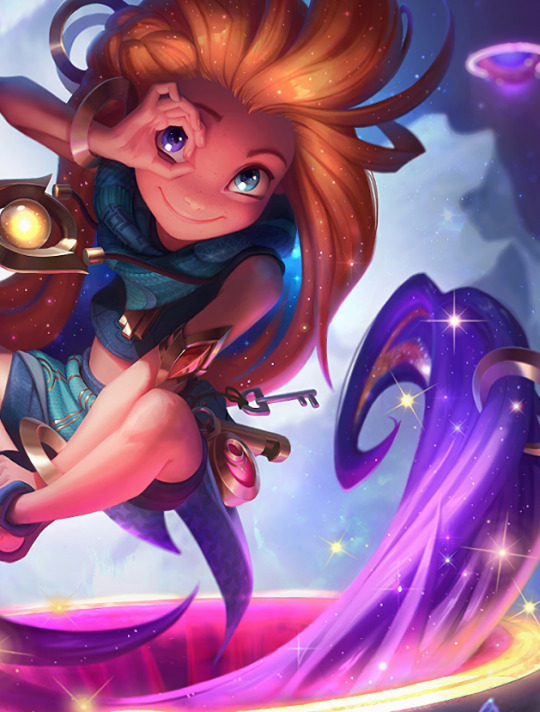
For those who dont know, the new fiddlesticks and zoe got a small connection in lore - in one of the old splasharts, fiddle carries a key, but upon receiving his rework, it was not there anymore
so people started noticing that the key that once belonged to fiddle was now in the hands of a mischievous little (and too powerful) girl
(this lore event is also present in fiddle's biography)
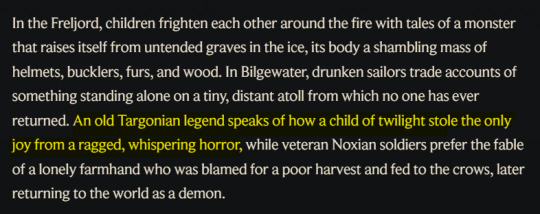
but after all, what this key was for?
Carnivalnites (or Jared Rosen), the main writer behind fiddle rework, rell, viego and nilah, answered it in an old tweet (now deleted) what the key was for
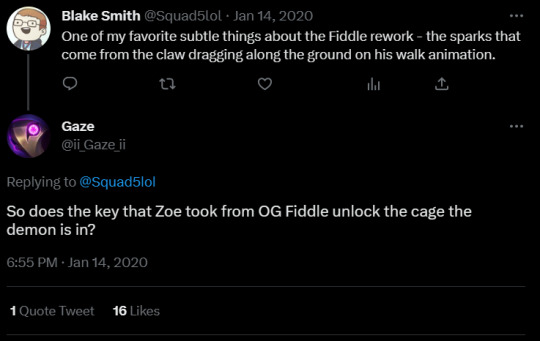

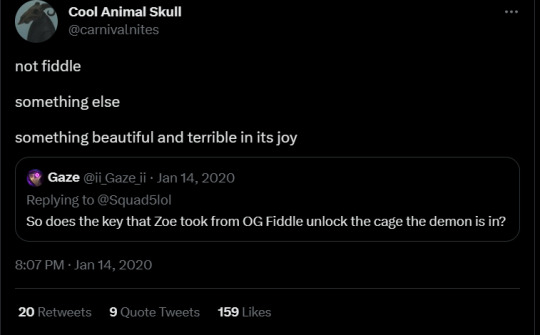
note 1: "beautiful and terrible in its joy", the duality concept strikes again
note 2: by the way it's put and by the way jared talks about the "something else" (that we now know it's ashlesh), it seems that at early stages the demon of joy was meant to be a lesser demon that was under fiddle sphere of influence (this concept is confirmed by the demonology annotation image from noxus that came out with fiddle rework) but with nilah release they have since moved from this concept cause now ashlesh is one of the ten kings alongside fiddlesticks
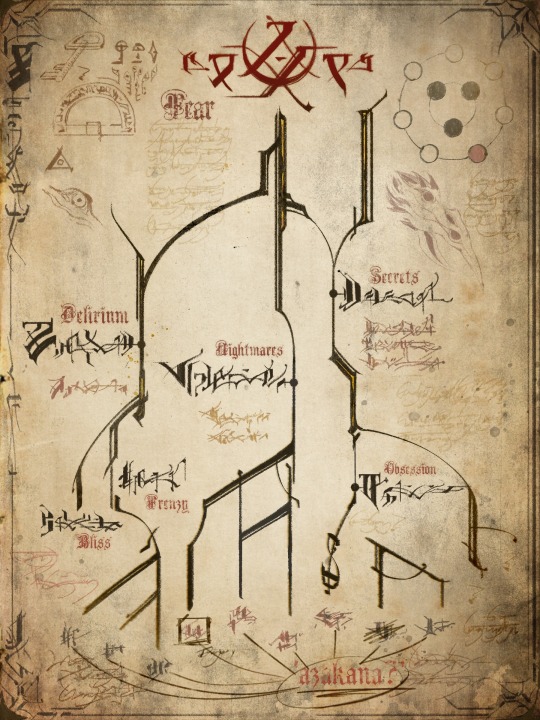
with all this information we can confirm that ashlesh is deeply tied with targon, or more specific to the celestial realm beyond
celestial beings trapped ashlesh for some unknown reason, possibly the demon was posing some kind of direct threat to them so he had to be locked
...

my personal theory is that ashlesh got kicked from the celestial realm, tried to build up his own "kingdom" below on runeterra, but also got denied this option and the celestials locked him away as a final punishment
"She read of the mad king Viego and his tragic fall, the genesis of the first dragons, and the foundation of the universe in the Kathkan tradition."
how is this possible? cause ashlesh himself is a star that once resided on the celestial realm and upon coming to the world below, he turned into the demon we know
Ashlesha (or Āśleṣā) is the 9th nakshatra (constellation) of the Hindu astrology; it's symbol is the sea serpent and its element is water. The head of the snake (in Hydra constellation) corresponds to the star Āshleshā.
interestingly, fiddlesticks bio also mentions this strange and otherworldly nature
An evil gone from the world for numberless centuries—long enough that the warnings of a nascent humanity passed into rumor, then myth, then legend… until all that remained were simple fables. An entity so utterly alien that it defies almost all contemporary knowledge of magic.
note 3: about the "turning into a demon" part, fiddle's bio is full of "it got turned into" imageries, of men and animals transforming with demonic power, so i dare say that is not impossible for ashlesh turning into a demon;
last, but not least, to make this even joyful (and funnier) i present you all the Star Guardian Version of the story (Jared worked on Another Sky novel for SG 2022 event too, so the thematics overlap)
ashlesh the STAR of joy


remember how fiddlesticks and zoe were (also) related in Another Sky? yup yup
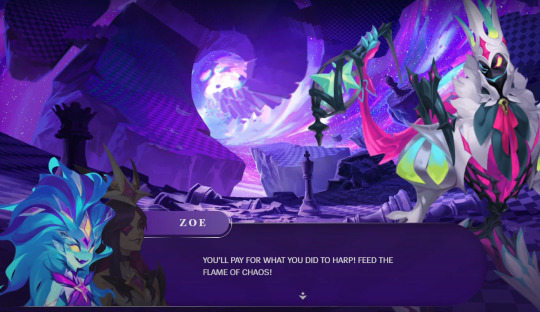
(i feel somehow that zoe also was the key to free ashlesh in this AU too)
with these i finish my thoughts, thank you for those who read it !
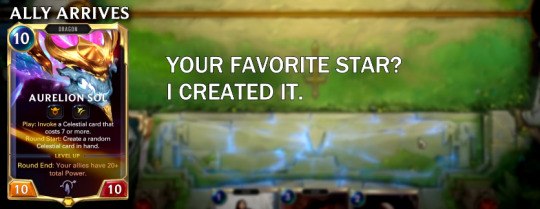
25 notes
·
View notes
Text
I agree with this. As much I detest the devadasi system as any other feminist, and I am aware many upper caste men wanted the tradition to continue on (as they're still forcing young girls to do that today) but the laws passed against it weren't out of good faith. And they didn't make much positive material difference-
This isn't like any prostitution system. This was the result of upper caste men exploitating female temple artists from marginalized castes, whose work shaped a lot of Indian culture which nationalists like to boast today. It hides the ugly truth that these performing arts of our culture, that are glorified today by upper caste Hindus, were modified so that it's suitable to the chaste pure "upper" caste woman compared to the "lower" caste women who had no "dignity".
Both upper caste and men from marginalized castes saw this as a debate of a dalit/sudra woman's sexual purity. Not as a form of sexual exploitation. Men like Periyar can claim to be pro women as much as they want, but their analysis of marriage and everything came out of their anti caste analysis, not out of genuine concern for women. They saw the bodies of women of their castes as a leveling ground, not as people whose own consent mattered. Which is why they focused on banning the whole system, which was a dumb thing to do as the writer in first article says, because not only was the contribution of these women to our culture neglected and erased from history but also they were also now seen as some impure women responsible for being marked as a shameful reminder of casteism and they were ostracized further. Ostracized from their own communities.
Keep in mind initially the devadasis could own land, need not have married any human male and could adopt daughters in case they didn't want to conceive with a human male. Understanding the kind of time this was and how patriarchal the upper castes were, this was probably seen as something too revolutionary for women from the "sudra" and "ati sudra" castes who were now gaining recognition in the temple, where many marginalized castes were forbidden to enter or segregated at temples. It was not the fault of the devadasis that Brahmin men started sexually exploiting them. As if women from "lower" castes aren't already seen as born as sexually deviant by upper caste people, now even the men of their own castes blamed them to "scar" their reputation.
In states like Tamil Nadu and Maharashtra, instead of reforming it so that the men who exploited and wish to exploit these dancers would be punished, they passed laws punishing the female dancers themselves. Including minors. I.e- the devadasis, who were the primary ones exploited in this system, were now criminalized themselves. In other states if the woman is exempt from conviction, then her family or any relative can be charged.
But there's not a single provision in the laws to do anything about cases that involves trafficking, coercion by men of upper castes, or for the men directly involved in sexual exploitation of the woman/girl. In fact in some states there were supposed to be rules to implement rehabilitation of those women, but those rules were never made and therefore never implemented 🙄
How this tradition (the original one, being married to a god instead of a human) and the arts related to it should reform.....is upto the women of those families in my opinion. I am definitely against the sexual exploitation and wish for it to be abolished instead of fully legalized, all I am objecting to is the framework of these laws (similar to criminalizing prostitutes and not the perpetrators of the sexual exploitation) and the social stigma these women face.
24 notes
·
View notes
Note
The reasons for the outsized influence on the academic humanities of the French poststructuralists (as opposed to the more moderate critics of scientism such as Midgley) is no doubt overdetermined, but which explanations do you find most convincing?
I can only speak for the English department, but the most convincing answer is the most benign one, the one that least involves "Cultural Marxist" subversion of the west or CIA anti-communist skullduggery, the one immanent to the institution of academic criticism itself: the humanists had no theory of their practice, no global meta-discourse to guide individual instances of their discourse. This left them at a disadvantage in explaining themselves to their students and to the public in the face of scientific hegemony. They needed a system.
Academic criticism felt too amateurish, too gentlemanly, even after certain modernist assumptions had been assimilated by the middle of the century. New Criticism had rigor but you ran against its limitations very quickly, not even so much because of its ahistorical and Christian presuppositions, but because it only really works at all on certain types of texts, i.e., lyric poems of a riddling disposition, as well as the few larger forms that can look like such poems if you squint (early modern drama, for example, or modernist fiction). Psychoanalysis and Marxism in their pre-theory forms were too reductive, not even textual hermeneutics really, and therefore left the critic too little to say (Hamlet wants to sleep with his mother, Dickens is petit bourgeois: so what?); this goes, too, for the pre-theoretical attempts at identity politics, like early feminist criticism of the "images of women in literature" type. Myth criticism had a certain visionary appeal, but too often decayed into a predictable game of spot-the-archetype (another Christ figure in a modern novel? tell me a new one).[*]
On the other hand, the structuralist and poststructuralist ideas coming out of France promised a theory of language that was also a theory of society—even a theory that language was society and vice versa—and a therefore promised a systematic science of the literary text qua text as well as an Archimedean lever with which to shift the political (and indeed the scientific) in language. "Il n’y a pas de hors-texte." It opened up the whole world of European philosophy to Anglophone literary criticism and glamorously updated everything they were already doing with a self-conscious methodological sophistication. Close reading for balanced ambiguities became textual analysis aimed at subversive aporias.
This turn to englobalizing method would in the long run dissolve any plausible mission for literary studies per se as opposed to an "everything studies" that doubles as a "nothing studies," even as it ironically became the new cultural lingua franca of the whole educated class, supplanting the literary itself. I went to see the horror film It Lives Inside the other day. In the genre-obligatory high-school classroom scene, our heroine, her loyalties painfully divided between white American assimilation and her immigrant family's Hindu culture, tells her teacher that John Winthrop's city-on-a-hill sermon is, and I quote, "a normative fantasy." (The film then labors, with mixed success, to supply a rival normative fantasy.) 40 years ago, in A Nightmare on Elm Street, the teens in their English class just recited a scary speech from Shakespeare.
_______________________
[*] When I used to teach this class, I would look at various handbooks for undergraduates, and it was always interesting to see how they'd characterize the pre-theory era. Terry Eagleton in Literary Theory and Peter Barry in Beginning Theory tendentiously called it "liberal humanist," with their skeptical eye on the Arnoldian idea that literature could unify and redeem an otherwise class-ridden society; but Nicholas Birns in Theory After Theory more persuasively said it was the era of the "resolved symbolic," when critics had faith they could provide a final interpretive answer to the riddle of the isolated text, as opposed to theory's later claims that everything is a text and that texts by their nature are permanently open-ended.
2 notes
·
View notes
Text
https://www.washingtonpost.com/religion/2022/05/13/study-girls-raised-jewish-outperform-christian-girls-academically/
Religion
Study: Girls raised Jewish outperform Christian girls academically
By Yonat Shimron
May 13, 2022 at 7:00 a.m. EDT
If a Supreme Court justice, the director of the Centers for Disease Control and Prevention and the treasury secretary were not enough, Jewish girls can find plenty of other role models of professional success.
A new study suggests the examples of these Jewish women — Supreme Court Justice Elena Kagan, CDC Director Rochelle Walensky, Treasury Secretary Janet L. Yellen and many others like them — have made a deep impression.
The study, published in the latest edition of the American Sociological Review, finds that girls with a Jewish upbringing are 23 percent more likely to graduate college, and to graduate from much more selective colleges, than girls with a Christian upbringing. (The study included comparisons with Protestants, mostly evangelicals.)
These girls, the study found, have ambitious career goals and prioritize their professional success over marriage and motherhood. The girls in the study were all reared in liberal Jewish movements that make up the vast majority of American Jewish life; none was Orthodox.
“Whereas Jewish upbringing promoted self-concepts centered on meaningful careers and public impact, non-Jewish upbringing promoted self-concepts centered on marriage and motherhood,” wrote the study’s four authors, led by Tulane University sociologist Ilana Horwitz.
The study is based on an analysis of data from the National Study of Youth and Religion, a 10-year longitudinal study of the religious lives of 3,290 American youth from adolescence into young adulthood. The NSYR included an oversample of 80 Jewish households, from which researchers based their study. (The NSYR did not include sufficient Muslim or Hindu participants for comparison.)
The researchers then matched the data with the National Student Clearinghouse, which provides educational reporting and verification.
The results were startling. The study estimates that boys and girls raised by at least one Jewish parent have a 73 percent probability of graduating from college, as opposed to 32 percent of young people raised by non-Jewish parents. In other words, they are at least 2.28 times more likely to earn a bachelor’s degree than children raised by non-Jewish parents.
When researchers looked at the elite schools attended by the Jewish NSYR participants, they found the school’s average SAT scores were higher, too.
Students raised by at least one Jewish parent attended colleges with a mean SAT score of 1201, whereas participants raised by non-Jewish parents attended colleges with a mean SAT score of 1102 (99 points lower).
And girls raised by Jewish parents were even more likely to graduate from college than boys raised with Jewish parents.
“I’d like to make a mark,” said a Jewish girl named Debbie who was interviewed by NSYR researchers. “I’m not the type of person who’s okay not being in the limelight.”
“I’m thinking about Ivy Leagues,” a Jewish girl named Jessica told researchers. “My parents both went to Cornell. I’ve been there a few times, I like it there a lot and it’s the kind of place where I would want to go.”
By contrast, some of the Christian girls in the study had other priorities.
“I think the biggest thing that a mother can do is to be with her kids,” said a girl named Mandy. “That’s the greatest thing over her career.”
The study suggests it was not any innate genetic factors that made the Jewish girls stand out. Rather it was a set of cultural, historical, political and religious factors that contributed to an environment in which parents and other Jewish elders imbued the girls with educational and professional expectations of success.
One key attribute shared by the Jewish girls: They grew up in Jewish communities that were egalitarian, believing men and women are equal in roles and responsibilities, in the home and in society at large.
Letty Cottin Pogrebin, a founding editor of Ms. Magazine and the author of “Deborah, Golda, and Me: Being Female and Jewish in America,” a 1991 book that addressed Jewish feminism, said she was not surprised by the findings.
“I think there has been a gradual accumulation of knowledge that explains women feeling that, ‘Damn the torpedoes, full steam ahead.’ As long as we can have a postgraduate degree we can mark our lives and we don’t have to marry achievement,” she said. “We can achieve our own.”
Stephen Vaisey, a professor of sociology at Duke University who was an interviewer for the NSYR when he was in graduate school, said he thought the study of Jewish girls was well designed and comprehensive. But it contrasted two very different groups: liberal Jews and often conservative Protestants. Had it included nonreligious as a comparison group, he said, the results may have looked different.
“If you took people with the same level of education and the same level of occupational prestige and compare Jewish and secular I wonder if you’d see a difference,” Vaisey said. “How much of this is about Judaism and how much about Christianity and traditional gender roles?”
All the girls in the NSYR study had what researchers described as a “moderate” level of Jewish engagement. They attended Hebrew school or perhaps a Jewish day school. They went to synagogue occasionally. Some belonged to a Jewish youth group.
But it was not Jewish teachings or any particular set of beliefs that necessarily contributed to their success so much as the stories they may have absorbed from their parents and grandparents at Shabbat dinners or bat mitzvah parties or at the Passover Seder about the accomplishments of their Jewish women ancestors, Horwitz said.
“Part of the narrative that Jewish adults convey to their children is that education helped Jews survive in Europe and eventually thrive in the United States,” according to the study.
Women are now much more likely to enroll in college than men. In 2020, just 41 percent of students enrolled in a postsecondary institution were men, according to the National Student Clearinghouse.
But Horwitz argues there is something about liberal Judaism that socializes girls to succeed academically and professionally.
“There’s an egalitarianism in Judaism where families teach their girls they can be anything they want to be,” Horwitz said. “They don’t want to do it by altruism, they want to do it by being prominent within. They want to be in the spotlight and make a difference in a loud way.”
— Religion News Service
6 notes
·
View notes
Text
Khan Global Studies: A Premier Destination for Competitive Exam Preparation

Khan Global Studies is one of India's most renowned educational platforms, providing high-quality content for students preparing for competitive exams such as UPSC, SSC, Banking, Railways, and State PSCs. Founded by the famous educator Khan Sir, the institute is known for its unique and engaging teaching style, making complex topics easy to understand for aspirants.
Comprehensive Study Material
Khan Global Studies offers a wide range of study materials, including books, notes, and online courses. One of the standout features of this platform is its well-structured content that covers subjects like Indian Polity, Geography, History, Economics, and International Relations. Students can access these resources through the official website Khan Global Studies and also purchase study materials that are tailored for various competitive exams.
Where Can I Get Free Current Affairs?
For aspirants looking for free current affairs, Khan Global Studies is an excellent source. The platform provides regular updates on national and international news relevant to competitive exams. Students can find free daily, weekly, and monthly current affairs on Khan Global Studies’ YouTube channel and its official website. Additionally, the institute offers PDF compilations of current events, which can be downloaded for revision purposes.
Apart from Khan Global Studies, students can also explore government websites like PIB (Press Information Bureau), The Hindu, and Rajya Sabha TV for authentic current affairs updates. However, Khan Sir’s explanation and analysis make even the most complex topics easier to grasp, making it a preferred choice for many aspirants.
Online and Offline Learning
Khan Global Studies provides both online and offline learning options. The online platform features live and recorded classes, mock tests, and quizzes that help students evaluate their preparation. Meanwhile, students who prefer classroom learning can visit Khan Sir’s coaching institute in Patna, Bihar, where he conducts lectures in person.
Why Choose Khan Global Studies?
Expert Guidance: Khan Sir’s exceptional teaching methodology simplifies difficult subjects.
Affordable Courses: High-quality education at an economical price.
Free Resources: Daily current affairs, free YouTube videos, and mock tests.
Comprehensive Syllabus Coverage: Study materials and lectures cover every aspect of the exam syllabus.
In conclusion, Khan Global Studies is a trusted educational hub for aspirants who want to excel in competitive exams. If you are wondering, "where can I get free current affairs?" Khan Global Studies is the ideal solution for your preparation needs.
Originally published at http://kgsupsc.wordpress.com on February 04, 2025.
0 notes
Text
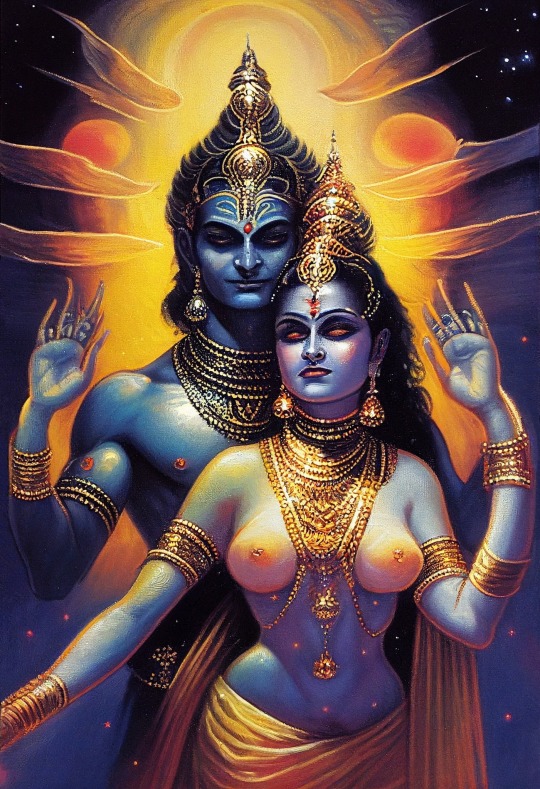

Cosmic Lovers 'Vishnu & Lakshmi' Talon Abraxas
The Symbolic Meaning of Lord Vishnu and Lakshmi
Lord Vishnu is Hindu Myth Hindu’s recognise Vishnu as the “protector.” He is the aspect of your personality that can dissolve the ego and uphold new Dharmas that enable you to develop peace of mind and bliss.
Ayurvedic teachings describe consciousness as being present. By taking control of emotions present in the five elements and the three gunas, you can take control of your life and master the energies of universal manifestation.
Vishnu is the higher consciousness that guides us and downloads messages that inform us what the right actions are to take. The problem most of us suffer is not knowing when we receive these messages because we are rooted in base consciousness.
Conscious comes to us as a thought, symbolised by Brahma in Hindu mythology. In the “Padma Purana”, Vishnu gives birth to Brahma who blossoms from the lotus flower that sprouts from Vishnu’s navel.
Brahma is said to be the creator of all things. He is the manifestation of ideas in the physical plane. The Lotus flower symbolises enlightenment, implying that consciousness passed to mortals is the Absolute Truth. The instructions to follow.
The Rig Veda states: “Vishnu is the most ancient of all, yet also the most recent. Nothing and no one creates Vishnu, yet Vishnu creates everyone and everything.”
In essence, the Supreme deity is a creative source but serves a greater purpose as the preserver. Escaping the bonds of the habitual mind is not easy and Vishnu has to keep a check that right actions are being followed.
It is said that Vishnu created the world with the right side of his body – that which is controlled by the left-side hemisphere of the brain. Although there are creative aspects in the right-side of the brain, it is widely accepted that most creative powers arise from the left side of the brain.
The right side of the brain is associated with collecting information and analysis. It’s the sensible part of the brain that talks us through what we should really do.
The Incarnations of Vishnu All matter is conscious which evolves. As Absolute conscious, Vishnu creates the world through Brahma, and Hindu mythology gives an account of the evolution of Earth in the incarnations of Vishnu.
According to legend, Vishnu has reincarnated nine times so far. They are:
Matsya, the fish Kurma, the Turtle (reptiles) Vahara, the pig (animal life) Narasimha, half man, half lion Vaman, the man-dwarf Parashuram the man with an axe Rama – moral man Krishna – philosophical man Buddha – enlightened man
As consciousness evolves in nature it consistently creates improved versions of itself. But Vishnu can only do this with the help of his wife Lakshmi, the goddess of wealth and prosperity.
The Symbolic Meaning of Lakshmi Lakshmi emerged from the churning of the milky ocean on a lotus flower and subsequently incarnates amongst mankind in various forms. Described as ‘the mother of the world’ the goddess nurtures consciousness.
Lakshmi cleans Vishnu’s feet to show her nurturing nature. In chapter 8 of the Vishnu Purana says:
“Vishnu is meaning, she is speech; Hari is polity, she is prudence; Vishnu is understanding, she is intellect, he is righteousness, she is devotion.”
Lakshmi means ‘goals’ and as the goddess of wealth, beauty and love is said to reside in those that are prospering in life. In Hindu art she is always depicted sitting on a one hundred petal lotus indicated she is pure.
Together with Vishnu, Lakshmi is Absolute Consciousness, or The Truth.
Her four arms represent Dharma (doing the right thing), prosperity, perfection and freedom from mental and emotional bondages.
Other qualities of Lakshmi are portrayed through the elephants she is often pictured with. In Hindu esoteric symbolism, elephants represent strength, wisdom and patience, qualities needed to nurture.
The symbolic meaning of Hindu symbols In ancient myth and Hindu art, Vishnu carries symbolic objects in his four hands and lies on a bed of floating serpents. The serpents represent the wisdom and peace of a calm mind that is freed from anxious thought.
Vishnu’s other symbols are: Conch = vibrational frequencies and energetic forces that create and sustain all life in the universe. Scientifically speaking, Vishnu is the personification of the Conscious Universe.
Mace = the destructive nature of the god. It symbolizes the dissolution of ego and negative traits or even the destruction of the universe itself.
Bow or Lotus Flower = Both the lotus and the bow represent awakened consciousness that allows you to see beyond the veil of illusion.
Discus = The spinning discus symbolises Purity of mind and used by Vishnu to destroy demons.
The symbolic meaning of Vishnu and Lakshmi relates to the highest forms of human consciousness that we are aware of. Together they tell us what to do, and give us the ability to nurture Brahma into fruition.
Master Mind Content offers online symbolism courses. We have several in-depth guides that explain how symbolism relates to the body-mind-energy connection. Understanding symbolism can help you make important decisions, improve your quality of life and understand more about the world.
37 notes
·
View notes
Video
youtube
#thehinduanalysis #thehindu #vocabulary#thehinduanalysis #thehindu #vocabulary #vocabularywords #thehindutoday The Hindu Editorial Analysis | 1 Feb 2025 | The Hindu Analysis | The Hindu Vocab by Sanjeev sir The Hindu Editorial Today | The Hindu Analysis | The Hindu Vocab by Sanjeev sir Today session we will discuss about the indian political issues with Amit Shah. Amit Shah discussed about the Delhi election. in this article Amit Shah point out the Delhi govt schemes Welcome to Vocab24 - Your Ultimate English Learning Hub! 🌟 Are you ready to master the English language? Look no further! Vocab24 is your all-in-one solution for English vocabulary, grammar, and exam preparation. 📚 What We Offer: Daily Updates: Get 15+ new updates every day to stay ahead. Newspaper Editorials: Read and understand articles from top newspapers like The Hindu, Economic Times, and more. Instant Word Meanings: Tap any word while reading to get its meaning in your preferred language (Hindi, Bengali, and more). Learn 10 New Words Daily: Discover new vocabulary with tricks, synonyms, antonyms, and pictures. Daily Quizzes: Test your knowledge with quizzes and see your All India Rank! Smart Learning: Watch grammar and comprehension videos in both Hindi and English. Comprehensive Vocabulary Resources: Access 60+ vocab videos covering over 3000 words, idioms, phrases, and much more! Practice Tests: Over 5000 practice tests for various competitive exams. Vocab Booster Games: Enhance your vocabulary skills through fun games. Offline Dictionary & Translator: Instant word meanings and translations, even offline. 🎓 Exam Preparation for All: Get tailored content for SSC CGL, SSC CHSL, IBPS, GRE, GMAT, IELTS, and more. Our videos cover everything you need for competitive exams! 🔗 Connect with Us: Join our Telegram Channel: Vocab24 Telegram WhatsApp for Courses: +91 78528 89280 👉 If you enjoy our videos, please like, share, and subscribe to support our channel! #Vocab24 #LearnEnglish #EnglishVocabulary #ExamPreparation #SSC #GRE #GMAT #IELTS #toefl #Vocab24 #LearnEnglish #englishvocabulary #exampreparation #ssc #GRE #GMAT #IELTS #toefl #thehindu #thehinduanalysis #thehinduanalysisinhindibankssccglisscchslienglishforall #thehindueditorial #thehindutodayanalysis #thehindunewsanalysis #thehindunewspaper #thehindutoday #thehinduanalysisduanalysis #thehindukannada #dailyvocabs #dailyvocabulary #dailyvocabshorts #dailyvocabularybooster #dailyvocabtricks #dailyvocabularywords #dailyvocab #vocab24 #vocabulary #vocabularywords #vocabularyenglish #vocab #vocabularybuilding #englishspeaking #englishspeakingpractice #englishspeakingcourse #englishspoken #englishlanguage #englsihgrammar #liveenglishclass #englishforssccgl #englishforssc #grammar #grammarquiz #grammarcourse #similarwords #rootwordvocabulary #rootwords #comphression #vocabbooster #englishbysanjeevsir #englishbyharshsir #englishclass #ssc #ssccgl2024 #sscenglish #sscenglishclasses #sscenglishpreviousyearpaper #ssconlineclasses #englishtopic #englishkesebole #englishkesesikhe #englishspeakingpractice #vocabprime #grammertips #vocabforssccgl #vocabforssc #vocabforbankingexam #vocabforbankpo #vocabularyexercises #vocabquiz #sscnotification #sscexam #ssccgl #ssc2025 #englishmarathon #sscgd #sscchsl #sscmts #closetest #parajumbles #sscenglishvocab #sscenglishquiz #sscenglish1stpaper #sscbank #dailyvocabs #dailyvocabulary #thehinduinhindi #vocabularyinhindi #vocabularyinenglish #vocabenglish #vocabboost #wordoftheday #vocab #languagelearning #learnenglish #englishidioms #writing #easyenglish #inglesonline #phrasalverbs #reels #vocabularywords #trending #americanenglish #angielski #ieltsvocabulary #vocabularybuilding #englishteacher #englishlearning #vocabularywords vocabulary | vocabulary words english learn | vocabulary words | vocabulary english | the hindu analysis | the hindu newspaper today | the hindu analysis today | the hindu editorial | the hindu editorial today | the hindu daily news analysis | daily vocab quiz | the hindu | the hindu vocabulary | the hindu vocabulary in hindi | the hindu vocab daily | hindu editorial analysis | english vocabulary | english vocabulary words | sanjeev sir english | daily voca quizs | daily vocab quizs | vocab24 vocabulary,vocabulary words,the hindu analysis,the hindu analysis today,the hindu editorial today,the hindu daily news analysis,daily vocab quiz,the hindu vocabulary in hindi,hindu editorial analysis,english vocabulary words,test your english vocabulary,sanjeev sir english,how to read the hindu newspaper,the hindu editorial,the hindu newspaper editorial,the hindu newspaper analysis today,the hindu editorial analysis,daily vocabulary english,daily vocabulary
0 notes
Text
Kundali (Janam Kundali) by Date of BirthA Kundali, or birth chart, is a fundamental aspect of Vedic astrology, depicting the positions of celestial bodies at the time of an individual's birth. It offers insights into one's personality, potential life events, and compatibility with others. Online Platforms to Generate Your Kundali:
AstroSage: Provides a free and detailed kundali by date of birth based on your birth details.
AstroYogi: Offers an online tool to generate your Janam Kundali with comprehensive analysis.
Numerology Match Making by Date of BirthNumerology assesses the mystical significance of numbers, especially those related to one's birth date, to determine personality traits and compatibility between individuals. Online Numerology Compatibility Tools:
AstroSage: Enter your and your partner's birth dates to assess compatibility.
Astrology Future Eye: Calculates life path numbers to predict compatibility scores.
AstroHoraz: Measures the level of agreement between two free numerology match making individuals based on their birth dates.
Zodiac Signs DatesThe zodiac is divided into twelve signs, each associated with specific date ranges:
Aries: March 21 – April 19
Taurus: April 20 – May 20
Gemini: May 21 – June 20
Cancer: June 21 – July 22
Leo: July 23 – August 22
Virgo: August 23 – September 22
Libra: September 23 – October 22
Scorpio: October 23 – November 21
Sagittarius: November 22 – December 21
Capricorn: December 22 – January 19
Aquarius: January 20 – February 18
Pisces: February 19 – March 20
Aries Horoscope for February 1, 2025As an Aries (March 21 – April 19), today's horoscope suggests: "Embrace your Mars energy to achieve your horoscope by date of birth goals. Focus on personal growth and be open to new opportunities."
Today's Marriage MuhuratSelecting an auspicious time (muhurat) for significant events like weddings is crucial in Vedic traditions. For February 1, 2025, the available sources indicate:
Drik Panchang: Lists February 1, 2025, as inauspicious for marriage due to prohibited Karana.
GaneshaSpeaks: Does not list February 1, 2025, as an auspicious date for marriage.
It's advisable to consult with a professional astrologer to determine the most suitable muhurat based on personal birth charts and specific requirements.
Maha Kumbh Mela 2025The Maha Kumbh Mela is a major vastu shastra for home Hindu festival occurring every 12 years. The upcoming Maha Kumbh Mela is scheduled from January 13 to February 26, 2025, at the Triveni Sangam in Prayagraj, Uttar Pradesh, India.
This festival attracts millions of pilgrims who gather to bathe at the confluence of the Ganges, Yamuna, and the mythical Saraswati rivers, seeking spiritual cleansing and blessings.
Vastu Shastra for HomeVastu Shastra is the traditional Indian system of architecture that emphasizes harmonizing living spaces with natural forces to promote health, prosperity, and well-being. Key Vastu Tips for Homes:
Entrance: The main door should ideally face north, east, or northeast to attract positive energy.
Living Room: Position in the today wedding muhurat time east or north for optimal energy flow.
Kitchen: Locate in the southeast corner, as this direction is associated with the fire element.
Master Bedroom: Best placed in the southwest to ensure stability and strength.
Pooja Room: The northeast corner is ideal for spiritual activities.
For personalized Vastu consultations, consider reaching out to reputable Vastu consultants in your area.
Delhi Legislative Assembly Election 2025The Delhi Legislative Assembly election is scheduled for February 5, 2025. The Chief Electoral Officer of Delhi has initiated various measures to ensure a fair and transparent election process, including combating fake news and enhancing voter awareness.
For the latest updates and detailed information, kundli game you can visit the official website of the Chief Electoral Officer of Delhi. By exploring these resources and consulting with professionals where necessary, you can gain deeper insights into astrology, numerology, Vastu Shastra, and stay informed about significant upcoming events.https://www.facebook.com/v2.6/plugins/like.php?action=like&app_id=190291501407&channel=https%3A%2F%2Fstaticxx.facebook.com%2Fx%2Fconnect%2Fxd_arbiter%2F%3Fversion%3D46%23cb%3Df820bff4fa158c82a%26domain%3Dastrologygame.weebly.com%26is_canvas%3Dfalse%26origin%3Dhttps%253A%252F%252Fastrologygame.weebly.com%252Ff06ef001a8e0941fe%26relation%3Dparent.parent&container_width=0&href=https%3A%2F%2Fastrologygame.weebly.com%2F1%2Fpost%2F2025%2F01%2Ffree-numerology-match-making-by-date-of-birth-with-today-marriage-muhurat.html&layout=button_count&locale=en_US&sdk=joey&share=false&show_faces=false&width=90
0 notes
Text
Current Affairs and Their Impact on Contemporary Legal Issues for NLTI
Current affairs are not just about staying updated—they shape contemporary legal issues and play a pivotal role in law entrance exams like NLSAT 2025, CLAT 2025, and CUET PG LLB. Whether you’re an aspiring lawyer or enrolled in NLSAT coaching, understanding the link between current events and legal principles is key to excelling in these exams. In this blog, we’ll explore how current affairs intersect with the legal world and why they are essential for your preparation.
Why Current Affairs Matter in Legal Exams
Direct Relevance to Exam Questions Law entrance exams like NLSAT 2025, CLAT 2025, and CUET PG LLB often include passages or case-based questions influenced by recent events. For instance, topics like environmental law or data privacy are frequently tied to global developments.
Broadening Legal Awareness Staying updated with current affairs helps you understand the evolving nature of laws, court decisions, and legislative reforms.
Building Analytical Thinking Analyzing how current events impact the legal system develops your critical thinking and reasoning skills, which are tested extensively in these exams.
Key Current Affairs Topics to Focus On for Law Aspirants
Climate Change and Environmental Law
Landmark judgments and international agreements like the Paris Accord impact policies worldwide.
Recent rulings related to environmental clearances are critical for analysis.
Data Privacy and Cybersecurity
Cases surrounding data breaches or new legislation like GDPR and India’s Data Protection Act.
Judicial Reforms and Case Backlogs
Issues like the Collegium system and alternate dispute resolution mechanisms.
Human Rights Issues
Topics such as gender equality, LGBTQ+ rights, and freedom of speech are often debated in legal and social contexts.
International Relations and Law
Issues like extradition laws, international trade disputes, and treaties affecting Indian law.
How to Incorporate Current Affairs into Exam Preparation
Follow Reliable News Sources
Use platforms like The Hindu, LiveLaw, and Bar & Bench for legal updates.
Read Editorials and Opinions
Analyze opinions from experts to understand legal perspectives on current events.
Take Mock Tests
Enroll in NLSAT coaching programs like NLTI to solve mock questions based on current affairs and legal issues.
Connect with Contemporary Legal Principles
Relate current events to constitutional provisions, legal doctrines, and landmark judgments.
Maintain Notes
Create concise notes on relevant topics and update them as events unfold.
Sample Legal Questions Based on Current Affairs
How do climate change laws address industrial accountability in India?
Analyze the impact of the Personal Data Protection Bill on digital privacy rights.
What are the implications of judicial activism on current human rights issues?
Conclusion
Current affairs are an indispensable part of legal studies and exam preparation for NLSAT 2025, CLAT 2025, and CUET PG LLB. By integrating recent events with legal principles, you not only enhance your knowledge but also prepare yourself to tackle complex, application-based questions.
Stay ahead in your preparation by practicing mock tests and leveraging study resources from NLTI’s NLSAT coaching programs. Your understanding of current affairs might just be the game-changer in acing your law entrance exams!
0 notes